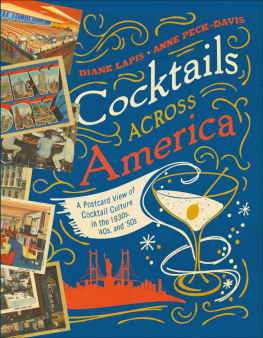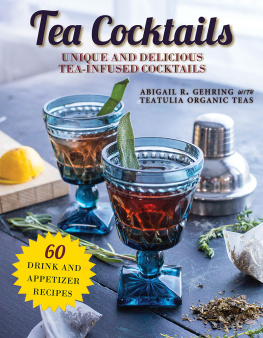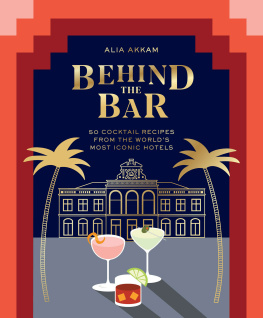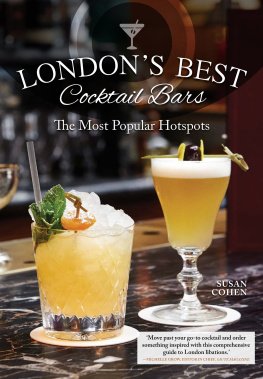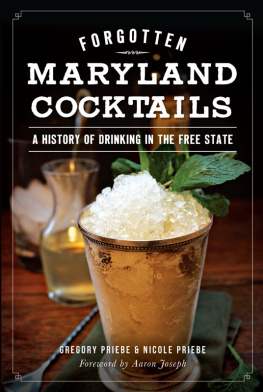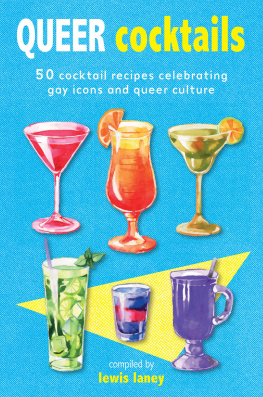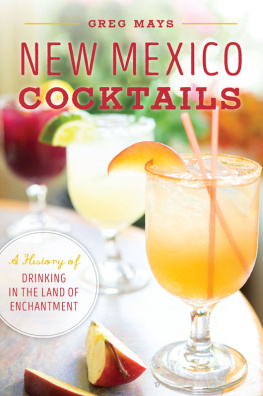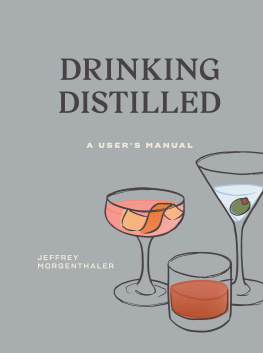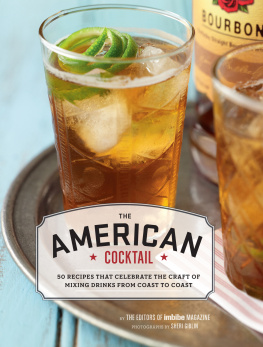

We dedicate this book to
our loving husbands,
Clifford L. Davis
and
Peter Lapis
CONTENTS
Cocktails Across America takes the reader on a journey to the drinking establishments famous in the 1930s, 1940s, and 1950s. The book brings to life cocktail bars from generations ago, many of which no longer exist. The authors, Diane Lapis and Anne Peck-Davis, have selected postcards that show where some of the greatest cocktails were created. Paired with previously untold narratives and fascinating trivia, you can look at the postcards, recreate the cocktail from the recipes provided, and experience another time in American history.
Today, it is easy to record a vacation or evening out. At the push of a button or a tap of a screen, you can take numerous photos and video. Years ago, however, you had to physically exchange the photo or slide with an individual in order to share the experience. It was often simpler to purchase a postcard and mail it to family and friends. Postcards, therefore, became a valuable record of the decor and ambience of post-Prohibition drinking and eating establishments.
Linen postcards appeared in the early 1930s and remained in production during the post-Prohibition years. The cards had a slight texture that allowed the ink color to pop and be more vibrant. Linen postcards allowed people to see faraway places more clearly and in more vivid color than could earlier postcards and photographs.
When Diane and Anne first showed me their collection, I was transported to a culture long gone. They have a massive collection of linen postcards on a wide range of subjects, from everyday muses to hotels, bars, and tourist destinations. It is magical to experience the midcentury restaurant and drinking culture through the gorgeous postcards of the era.
A personal favorite of mine is a postcard of the Carousel Bar at the Hotel Monteleone in New Orleans. I have attended the International Cocktail Convention, Tales of the Cocktail, which is held at the Hotel Monteleone. The event brings out todays industry leaders in the cocktail world. The heart of the conference is centered at the Carousel Bar.
The bar was designed to look and revolve like a carousel, a theme that was popular in the post-Prohibition years and that appeared in bars all over the country. Today, the Carousel Bar is the only current example of this type of bar design. The linen postcards featured in this book permit us to see how different bars, restaurants, hotels, and travel looked in the past. Cocktails Across America provides the reader with a unique opportunity to experience the post-Prohibition, World War II, and post-war years through interesting stories, period imagery, and vintage recipes.
Cheers,
Douglass Miller
Certified Wine and Spirits Specialist
Drinks on the house! On December 5, 1933, revelers legally imbibed once more as the 21st Amendment became fully ratified, ending the nationwide prohibition on alcohol. Americans were delighted that the Great Experiment was over, though times remained tough as they struggled through the Great Depression and World War II. Many sought solace and entertainment in movie theaters, watching Fred Astaire and Ginger Rogers dance, sing, and drink the night away in chic clubs. Atmospheric restaurants and cocktail lounges began to emerge, mimicking the more glamorous life on the silver screen. Guests were offered an opportunity to escape the humdrum of their daily activities.
After Prohibition, drinking establishments proliferated. Many of these venues were advertised on linen postcards. Produced between 1931 and the late 1950s, these bright, colorful postcards portrayed the fun and joy that could be found at a particular hotel, restaurant, or supper club. Printed on a patterned card stock that resembled linen, airbrushed images in rainbow hues and utopian ambience turned the ordinary into the spectacular. New cocktails were created during this period and old ones were served again. Some were forgotten entirely and revived years later. Tastes changed and new ingredients crept into the American market, including rum, tequila, and vodka, influencing post-Prohibition cocktails.
As Americans developed a taste for the exotic, many whimsical bars and restaurants opened to meet the demand. It was possible to receive a linen postcard from a friend depicting a circus-, zoo-, or aquatic-themed establishment, or one with European, Asian, or Latin motifs. Don the Beachcombers Polynesian-themed establishment set off a trend of tropical-inspired drinks and venues later known as tiki bars. Trader Vics provided a way to enjoy an exotic environment while choosing from many newly popular rum-based drinks, such as the Mai Tai. It is easy to imagine sipping a carefully constructed concoction while dreaming of tropical breezes in a faraway place. Elegant Art Deco clubs treated guests to streamlined, futuristic decor where they could listen to jazz or dance to a big band. Drinks were served with a flourish, reviving vintage cocktails or adding new twists to old favorites. When viewing the interiors of these lavish venues, one can easily imagine the fun and optimism guests experienced as they toasted to a bright tomorrow.
Advancements in mechanical capabilities and techniques found a creative use in establishments during the 1930s, 1940s, and 1950s. Some hotels and lounges installed a merry-go-round revolving bar, allowing thrilled patrons the novelty of taking a spin while enjoying their favorite drink. Ice-skating shows were also part of the supper club scene, stemming from the popularity of Olympic skating star Sonja Henie and her appearance in Hollywood films. The ability to freeze small stages with ice started a popular trend referred to as tank shows. What could be more entertaining than eating, drinking, and watching ice-skating performances on indoor ice rinks? Technological breakthroughs in bowling, including the use of automatic pin-setters, bolstered the popularity of this sport andin no timebowling alley clubs popped up, offering guests a drink between frames.
The travel industry changed rapidly after Prohibition. Americans were able to travel on high-speed trains, planes, and ships. Each form of transportation provided opportunities to imbibe, whether in elegant lounges, dining cars, or plane cabins. The immense popularity of train travel in grand streamlined locomotives meant guests could drink to their destinations in Art Deco style. Some trains were so famous they had cocktails named in their honor. The air industry introduced in-flight cocktails midcentury. Ships, outfitted with bars and dance halls, were already a big draw for tourists, precursors to the modern booze cruises.
Linen postcards provide a unique portal into what nightlife was like in the post-Prohibition, World War II, and post-war years. To enhance this experience, we have paired the vintage cocktail recipes with stories about the people, places, and locations depicted in the images. Through period vignettes, colorful postcards, and inventive recipes, prepare to be transported to another time and place in American history, drinks in hand!
Next page
